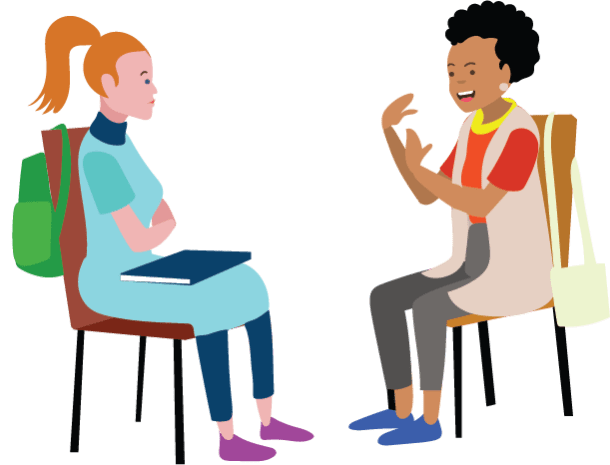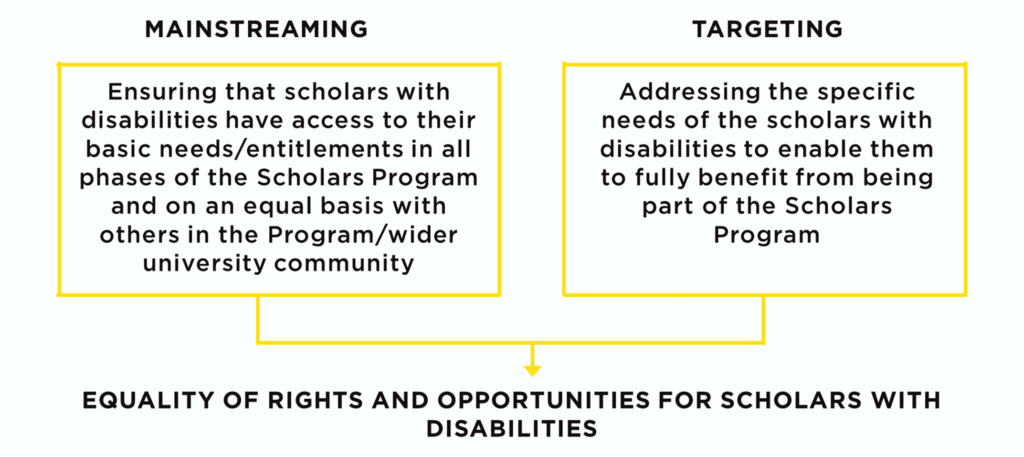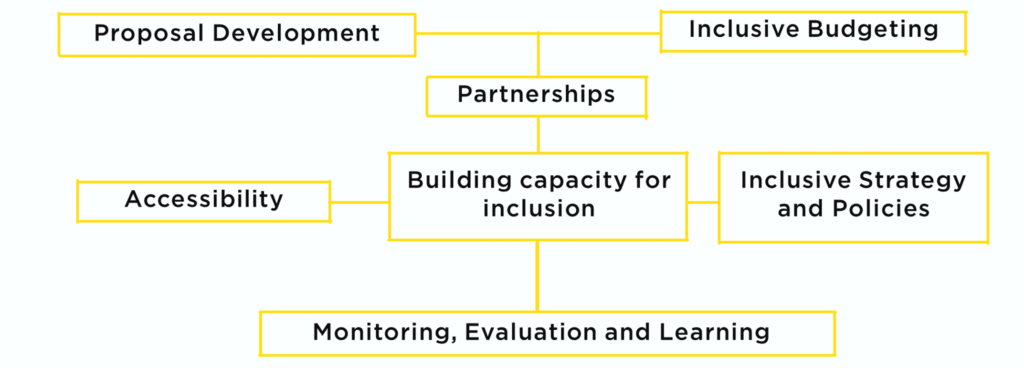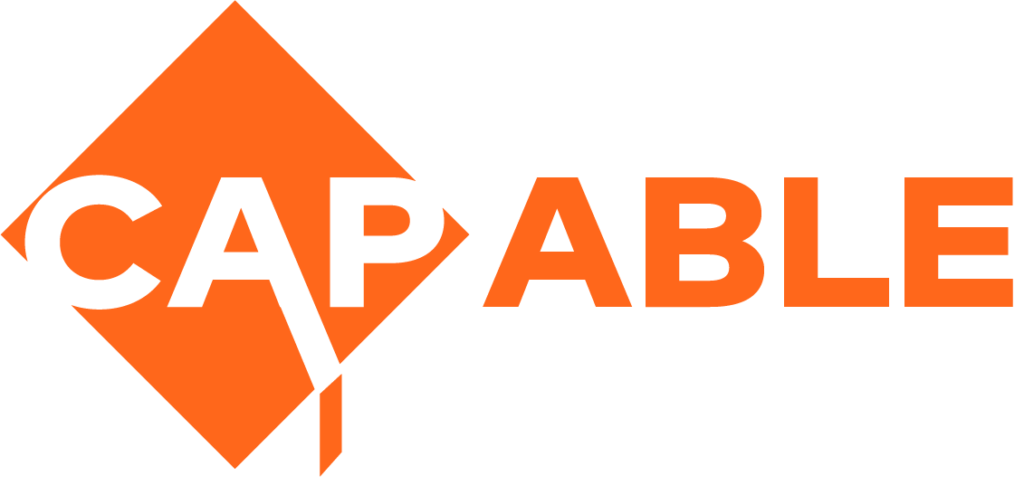What does an Inclusive Mastercard Foundation Scholars Program look like?
What can you find in this section
Applying a twin-track approach to disability inclusion
The twin-track approach is commonly used in facilitating access to rights for a wide range of marginalised populations. In this instance, the approach is applied in promoting the inclusion of young people with disabilities in the Mastercard Foundation Scholars Program.

Mainstreaming disability
Mainstreaming disability requires a set of actions that work to ensure that Mastercard Foundation Scholars with disabilities have access to all facilities, activities and entitlements as stipulated by the Program on an equal basis with others in the Program and in the wider university community.
Parallel to this, is targeted interventions and specific adaptations put in place for Mastercard Foundation Scholars with disabilities during the planning, implementation and monitoring of the Program, that enable them to fully and actively participate.

Applying a twin-track approach to disability inclusion means ensuring that young women and men, regardless of their type of impairment, have equal rights and access to opportunities within the Mastercard Foundation Scholars Program as well as adequate preparation for the next phase of their lives after the Program.
This requires integrating aspects of disability inclusion right from program development to implementation, that is; having an inclusive co-design and program formulation; budgeting to cover disability-related expenses; partnerships with organisations of people with disabilities (OPDs) and disability expert organisations; addressing accessibility; building capacity on disability inclusion with all relevant stakeholders; inclusive institutional policies and; monitoring, evaluation and learning.
We refer to these elements as the Seven Pillars to Disability Inclusion.
Seven Pillars to Disability Inclusion

Inclusive co-design and program formulation
During the process of defining a Mastercard Founation Scholars Program’s objectives and scope, it is important to conduct a barrier analysis: looking specifically at barriers that young people with disabilities face in accessing education, from early childhood to primary and tertiary education; what types of communication and accessibility considerations might they need within the Program; factors contributing to their social exclusion and self-exclusion; and how the Mastercard Foundation Scholars Program can best be designed to support their education and career development .
Findings and recommendations from this barrier analysis should be factored into the Program development.
Establishing a baseline at this stage on students with disabilities already enrolled at the university, types of impairments represented/not represented, as well as their educational background will provide more information on the situation on ground and data from which change and the impact of the Mastercard Foundation Scholars Program can be measured over time.
Collaboration with various stakeholders (including young people with disabilities and representatives of disability structures, Organisations of Persons with Disabilities (OPDs), Disability-specific organisations, responsible government bodies, special and mainstream secondary schools) during all the activities mentioned above will prove invaluable to the design of the Program, ensuring its relevance to the specific needs, abilities and talents of young people with disabilities.
Inclusive budgeting
Activities to mainstream disability and specific interventions towards disability inclusion, as well as monitoring and evaluation of disability inclusion all require adequate planning and earmarked budget. While it may be difficult to calculate exact costs required for disability-related expenses, we recommend setting 2-5% of the overall program budget.
Disability inclusion in budgeting means allocated budget to (not limited to):
- Reduce or remove the barriers to inclusion, e.g. measures to enhance accessibility of premises and washrooms.
- Avail assistive devices such as white canes, wheelchairs, crutches, audio recorders, among others; if and when needed by Mastercard Foundation Scholars with disabilities.
- Cater for reasonable accommodation (personal assistants, transport allowance, sign language interpreter, assistive technology, brailling etc.).
- Raise disability awareness and build capacity on inclusion of university/ education institution staff.
- Bring in disability expertise to tailor curriculum and course materials.
Partnerships
Partnerships with Organisations of Persons of Disabilities (OPDs), local disability groups, Disability Specific/Expert organisations, responsible government bodies, special and inclusive secondary schools, are important for the meaningful integration of disability inclusion in all phases of the Mastercard Foundation Scholars Program.
- Map out these actors within your target area(s) and start correspondence as soon as possible.
- Garner their support and collaboration, utilize their networks to support the recruitment process of Mastercard Foundation Scholars with disabilities, gain connections and recommendations to disability-related service providers (such as qualified sign language interpreters, personal assistants, providers of assistive devices) and,
- Make use of their experiences and knowledge to provide expertise on disability inclusion suited to your context and specific needs.
Building capacity for disability inclusion
Disability awareness training is necessary, not only for academic staff, but also for university management, non-academic staff, and Mastercard Foundation Scholars’ peers without disabilities – tailored to their needs, responsibilities and capacities.
This works to change the mindset around the abilities of students with disabilities, increase confidence in and commitment to including students with disabilities in academic and non-academic activities, and overall, create a supportive and inclusive learning environment.
This calls for regular engagements that bring students with and without disabilities together (as well as the wider university community), such as diversity and inclusion awareness events such as the annual International Day of Persons with Disabilities, community initiatives and inclusive sports.
Beyond disability awareness, building the confidence of lecturers on how to effectively accommodate the needs of students with various types of impairments in learning will go a long way in creating an inclusive learning environment for them. This technical support can range from basic sign language training, correct language to use while referring to someone with a disability, inclusive teaching methodologies and specifics on the learning accommodations for specific impairments.
While it is necessary to bring in external expertise for these sessions, it is worthwhile to invest in building in-house capacity on disability inclusion through Master Trainers. Master Trainers are selected from existing university management, academic and non-academic staff, and given extra training on disability inclusion in order to support other university staff and the wider university community.
Creating additional staff positions and/or other long-term contracts with disability-related service providers for sign language interpreters, personal assistants to support students and staff with disabilities will also enable efforts on disability inclusion. Having these support staff and other accessible facilities in place have been shown to increase enrollment of students with disabilities and recruitment of staff with disabilities.
It is paramount to conduct a Disability Inclusion Assessment to systematically examine critical domains necessary for the integration of disability inclusion in institutional processes.
One such tool that can be used is the Disability Inclusion Scoring Card (DISC), a tool that has been developed by Light for the World to measure inclusion at institutional level. The DISC measures how inclusive an institution is against a set of detailed inclusion criteria; identifying strengths and opportunities for change and setting a baseline through which change can be monitored over time.
The DISC examined eight domains, namely:
- Strategy,
- Human Resource Management,
- Accessibility, Partnership,
- Student Enrolment and Accomplishment,
- Curriculum Planning,
- Delivery and
- Implementation.
Accessibility
An accessible barrier-free environment is a core element of disability inclusion, allowing people with disabilities, particularly those with visual, physical, neurological and multiple impairments; to fully and actively participate in all spheres of university life.
To systematically assess and track accessibility within the institution, an accessibility audit must be conducted by an authorised / accredited body with all relevant Mastercard Foundation Scholars Program and university management staff present.
This audit should track physical spaces in the university routinely used by students; such as lecture halls, administration block, laboratories, sanitary facilities, cafeteria, libraries, other common areas as well as student residences.
Beyond physical accessibility; assess accessibility of Information, Education and Communication (IEC) Materials as well. This is an essential consideration for students with visual, hearing and learning impairments. This can be an ongoing process also with feedback from students with disabilities.
Having students and/or staff with disabilities take part in the accessibility audit will ensure that their experiences and needs are adequately taken into account during the process.
Following an audit, an action plan should be put in place stating actions to be performed, specific timeframe and people responsible and a review date.
An accessibility audit should not be a one-off activity but a regularly occurring one; to continuously check progress made and address any regressions; also to account for current trends and advances in technology.
Inclusive Strategy and Policies
To sustain results achieved through the Mastercard Foundation Scholars Program, strategies used to foster disability inclusion can be scaled to the entire university through establishing synergies and collaboration between the Program team, the university management and other departments responsible for overseeing diversity and inclusion or disability support services for students.
Disability inclusive policies and strategy documents move beyond a statement of commitment to inclusion: attention for the inclusion of disability-specific considerations in the Human Resource Policy of the institution and securing the representation of people with disabilities at different levels of the organization (including management) should be factored in.
Reasonable accommodation, in its entirety, also needs to be secured in policies, including additional time for examination for students with visual or hearing impairments and the right of having a sign language interpreter.
Guidelines for systematic reviews and adaptation of curriculum planning and implementation should be rooted in policy, paying keen attention to accessibility of the curriculum and assessment methods. Measures taken to create a barrier-free and accessible environment such as Disability Inclusion Assessments and accessibility audits should also be stated in policy including periodic reviews and reassessments.
Finally, fostering partnerships with organizations of persons with disabilities, disability specific and disability expert organisations ensures a network of collaboration, referral and learning around disability inclusion.
Monitoring, Evaluation and Learning
Monitoring and evaluation of disability inclusion is an integral part of disability inclusive programming and essential for enhancing the effectiveness of disability-related interventions. Actions mentioned under the pillars above such as the barrier analysis, Disability Inclusion Assessment and Accessibility audit all provide basis and tools from which disability inclusion can be monitored within the Program.
In addition, setting targets/milestones and including specific indicators around disability inclusion works to set the pace for other actions needed to achieve and track the set targets – such as collecting and analysing disability-disaggregated data and budgeting to cover disability-related costs and targeted interventions.
Apply an action learning approach – using the data collected to learn and adapt activities/interventions as Program implementation progresses. The participation of Mastercard Foundation Scholars with disabilities in monitoring and evaluation processes is also beneficial to making the Program more responsive to their actual, rather than assumed, needs and promotes the sustainability of results through stronger ownership of the Program among the Scholars.
In line with action learning, document challenges faced, solutions, achievements and key lessons learned as well as innovative practices/ approaches/interventions that produce good results in the process of program implementation.
Share these widely for others to learn from your journey!
Other Links
RECEIVE OUR UPDATES
- →
-
Chat with Us!
Do you have a comment, suggestion, question or request for more information? Let us know!

